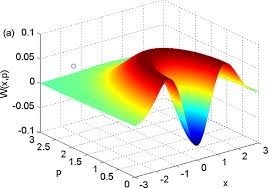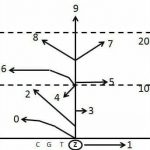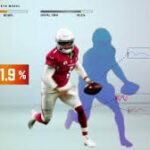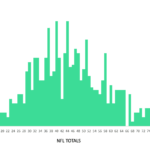 Predicting NFL player performance is highly challenging because player statistics are deeply intertwined and influenced by numerous factors beyond individual ability. This “statistical entanglement” means that a player’s output depends not only on their own skills but also on teammates, opponents, game situations, coaching strategies, and random chance.
Predicting NFL player performance is highly challenging because player statistics are deeply intertwined and influenced by numerous factors beyond individual ability. This “statistical entanglement” means that a player’s output depends not only on their own skills but also on teammates, opponents, game situations, coaching strategies, and random chance.
Traditional metrics often fail to isolate a player’s true contribution because stats like yards gained, completions, or tackles are affected by the performance of others on the field. For example, a wide receiver’s yardage depends on the quarterback’s accuracy and offensive line protection, while a defender’s stats can be influenced by the overall defensive scheme.
This complexity makes predictive modeling difficult, as simple correlations or isolated stats don’t capture the full picture. Advanced analytics attempt to untangle these relationships using techniques like multivariate analysis, machine learning, or contextual data, but uncertainty remains high.
In essence, the statistical entanglement in football reflects the sport’s collaborative and dynamic nature, where individual performance is inseparable from the team environment, making precise predictions inherently uncertain.
What is Statistical Entanglement?
Statistical entanglement refers to the interconnectedness of player statistics, where individual performance metrics cannot be fully understood in isolation. In the NFL, a player’s stats are heavily influenced by teammates, opponents, coaching strategies, and situational variables, all intertwined in complex ways.
Unlike sports where individual contributions are more isolated (like tennis or golf), football is a highly collaborative and dynamic game. This means statistical outputs like rushing yards, receptions, or sacks are not purely reflective of one player’s ability but also the context in which they operate.
Why Does Statistical Entanglement Matter?
Because of this entanglement, standard metrics often fail to reveal a player’s true value or potential. For example:
- Quarterbacks: Their passing yards depend on the offensive line’s protection, the quality of receivers, and play-calling decisions.
- Wide Receivers: Their catches and yards are influenced by the quarterback’s accuracy, offensive scheme, and defensive coverage.
- Running Backs: Their rushing yards are affected by the offensive line’s blocking and the game situation (e.g., leading or trailing).
- Defensive Players: Tackles, sacks, and interceptions depend on team defensive schemes and the pressure applied by teammates.
This interdependence means that even if a player improves their skills, their stats might not reflect it if other factors don’t align.
Examples of Statistical Entanglement
Example 1: Wide Receiver Performance
Consider two wide receivers, Player A and Player B, on different teams:
- Player A catches 80 passes for 1,200 yards.
- Player B catches 60 passes for 1,100 yards.
At first glance, Player A seems better. But Player A’s quarterback has a high completion rate and throws often, while Player B’s quarterback is less accurate but Player B gains more yards per catch. Player B might be more explosive, but the stats don’t tell the full story without context.
Example 2: Running Back and Offensive Line
Running Back X averages 5 yards per carry behind a top-tier offensive line, while Running Back Y averages 4 yards per carry behind a weaker line. The difference in stats may owe more to blocking than running ability.
Approaches to Untangling Statistics
To better predict performance, analysts use advanced methods:
- Multivariate Analysis: Examines multiple variables simultaneously to account for interdependencies.
- Machine Learning Models: Use large datasets to identify hidden patterns and contextual factors.
- Contextual Metrics: Stats adjusted for game situations, opponent strength, and play types.
- Film Study and Qualitative Analysis: Watching game tape to understand player impact beyond numbers.
Conclusion: Mastering NFL Player Predictions Despite Statistical Entanglement
Statistical entanglement is a key reason why predicting NFL player performance — and winning your fantasy football league — is so challenging. By understanding how player stats are intertwined with team context, you can make smarter draft picks and lineup decisions.
At ff-winners.com, we focus on combining advanced analytics and football insight to help you cut through the noise and find real value in your fantasy football drafts.







